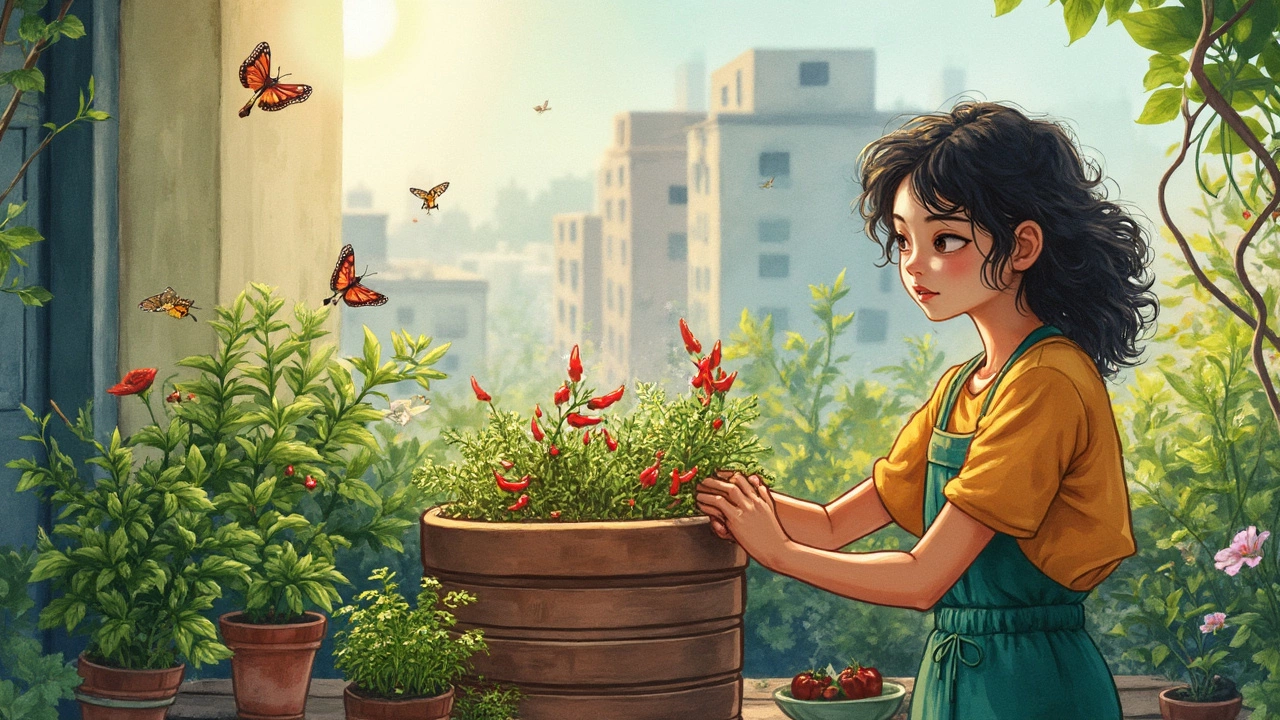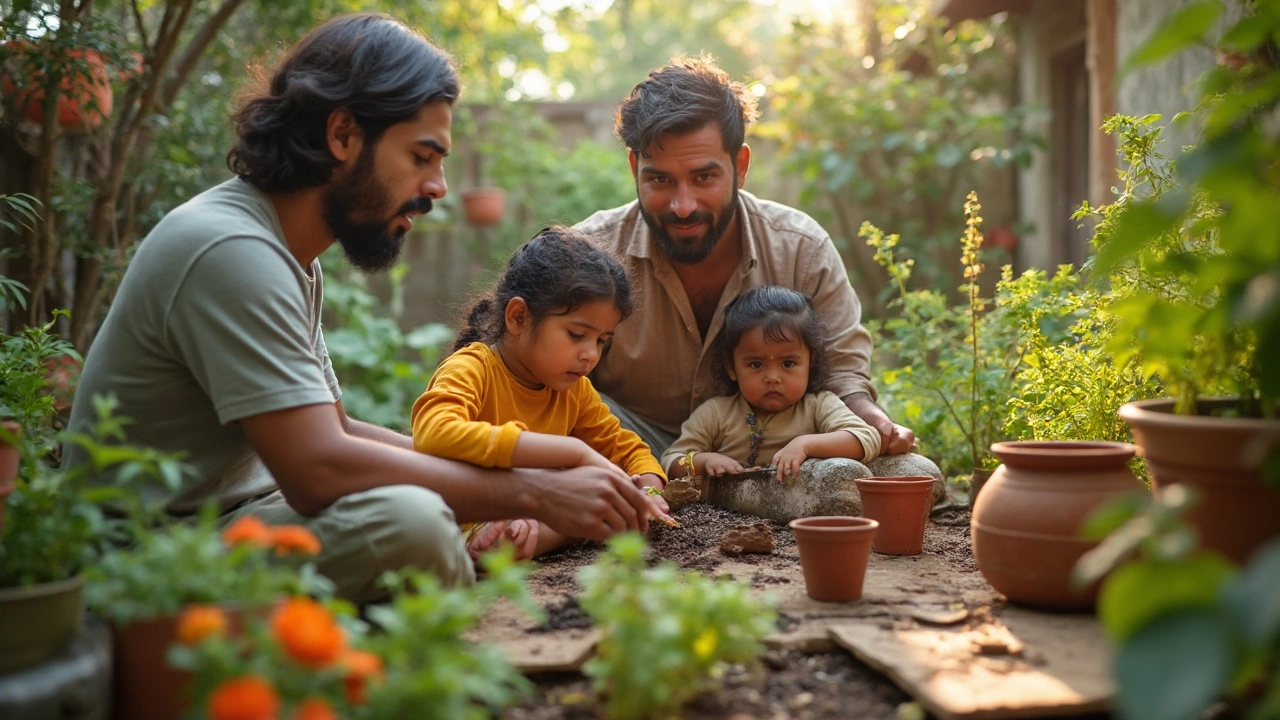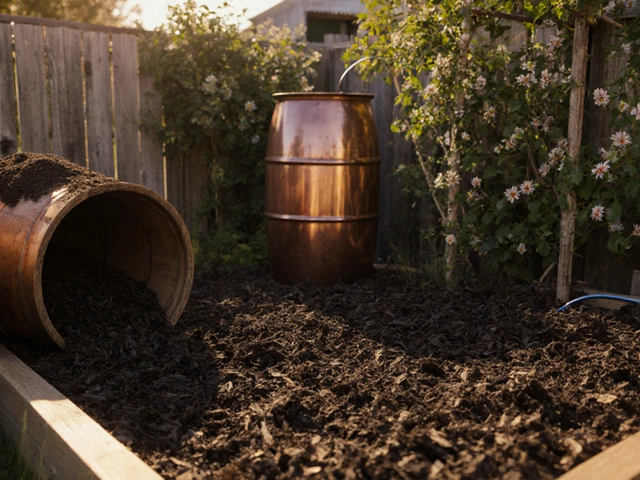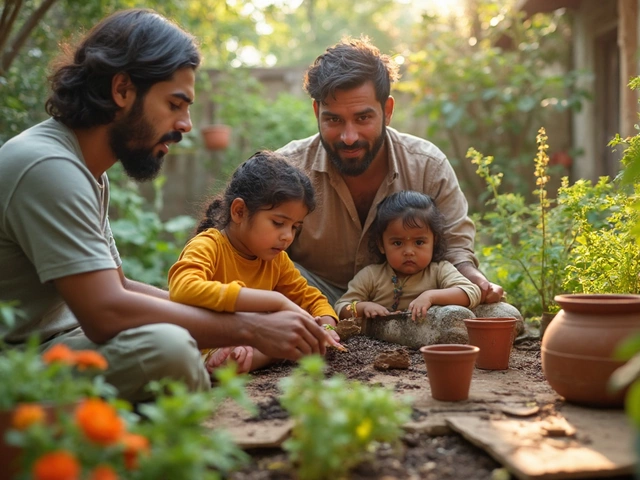Ever looked at your yard and thought, Why not make this patch of dirt do something good? You don’t need fancy gear or a degree in botany—just a real plan. The first step to a sustainable garden is picking a good spot that gets at least six hours of sunlight a day. If you’re stuck with shade, choose leafy veggies and herbs that don’t mind.
Look for tools you already have before buying anything new. Old buckets, cracked bowls, even plastic takeout containers can kickstart your planting journey without adding to landfill. There’s no need to buy all those shiny garden gadgets right away. Being resourceful is the name of the game when you’re gardening green.
- Grab the Right Spot and Tools
- Work with Nature: Soil and Compost
- Choosing the Right Plants
- Water-Saving and Pest-Wise Tricks
Grab the Right Spot and Tools
Choosing the right place to start your sustainable garden can make everything so much easier. Full sun is best for most veggies and flowers, so aim for an area that gets at least six hours a day. If you only have access to shade or partial shade, go for plants like lettuce, kale, mint, or parsley—these guys don’t complain about a little less light.
Pay attention to drainage where you want to put your garden. Areas that stay soggy after a rain will drown roots. The trick is to pick a spot where water doesn’t pool, or even try a raised bed if every patch seems swampy. You can build a simple raised bed out of reclaimed wood or old bricks, skipping the fancy kits in stores.
Let’s talk tools. You don’t need that deluxe ten-piece set you see online. Basics like a trowel, a spade, and a watering can are enough to get you started. Raid your kitchen for containers: yogurt cups are perfect for seed starting, and old buckets make great planters. Even worn-out spoons can double as mini shovels in a pinch.
If you want to keep things eco-friendly from the start, skip the new plastic stuff and check local swap groups or thrift stores for second-hand tools. More often than not, you’ll find sturdy hand-me-downs that last longer than the new ones. The less you buy new, the better for your wallet and the planet.
And don’t forget, your spot doesn’t even have to be a backyard. Apartment gardeners can use balconies, window sills, or outside steps—anywhere sunlight lands. The key is starting small with what you’ve got and growing from there.

Work with Nature: Soil and Compost
The secret to any sustainable garden isn’t the plants—it’s the soil. Healthy dirt is packed with tiny life forms that help roots grow, break down waste, and even fight off pests. If your soil feels tough and clumpy or drains too fast, don’t panic. Most yards need a soil boost before planting.
Skip those chemical fertilizers. You can feed your soil for free with kitchen scraps and a little patience. Compost turns banana peels, coffee grounds, eggshells, and yard waste into rich, nutrient-packed dirt. It saves money and keeps food trash out of landfills (which is a win, since over 28% of landfill waste is food scraps).
- Pick a corner for a simple compost pile or grab a bin (even an old trash can with holes works).
- Toss in fruit and veggie peels, tea bags, shredded newspaper, and leaves. Avoid meat, dairy, and oily foods—they attract pests.
- Turn your compost every week or two with a shovel for quicker breakdown.
- If it smells rotten, add more dry stuff (leaves, cardboard). If it’s too dry, sprinkle some water.
There are also some clever tricks for checking your soil before planting:
- Grab a handful of damp soil and squeeze. If it crumbles easily, that’s perfect. If it stays clumped or feels gritty, you’ll need more compost or mulch.
- Look for wiggly earthworms. Their presence means your soil is healthy.
| Item | Breakdown Time |
|---|---|
| Fruit & veggie scraps | 2–6 months |
| Egg shells | Up to 1 year |
| Shredded paper | 2–4 months |
| Leaves | 6–12 months |
Healthy soil stores more water and helps roots dig deeper, which means stronger plants and less watering. So, before splurging on seeds or cute planters, put some love (and banana peels) into your dirt.

Choosing the Right Plants
If you want an easy, eco-friendly garden, picking the right plants is half the battle. It sounds simple, but this can mean the difference between a garden that thrives and one that’s always in survival mode.
First, stick with native plants. These are already adapted to your local weather, need less water, and can fight off local pests without much help. For example, if you live in California, go for California poppies or manzanita. In the Midwest, black-eyed Susan and wild bergamot are rockstars. Did you know native gardens use about 60% less water on average than lawns and exotic plant beds? That saves on both bills and effort.
Choosing plants that support pollinators pays off, too. Bees, butterflies, and even some birds will flock to your garden if you offer the right food. Look for sunflowers, milkweed, lavender, and chives. Aim for a mix—long-blooming flowers, herbs, and some veggies if you have space.
- Buy chemical-free seeds or young plants whenever you can.
- Avoid invasive species, even if they're on sale. They might choke out everything else and mess with your local ecosystem.
- If you don’t have space, try dwarf varieties or compact veggies like cherry tomatoes and lettuce that even work in planters.
If you want to get smart and save even more work, use companion planting. Some plants help each other grow or keep pests away. For instance, put basil near tomatoes to boost their flavor and keep bugs off. Marigolds planted with beans or squash can push away nasty pests.
| Plant Type | Average Water Needed |
|---|---|
| Native Plants | 0.5 inches |
| Exotic/Non-native Plants | 1.25 inches |
Want to go even more low-maintenance? Perennials, like rhubarb, asparagus, or berries, save you the hassle of replanting every year. That means less digging, less spending, and more time chillin’ in your sustainable garden.
Remember, choosing the right sustainable garden plants right at the start means way less fuss later on. You’ll spend less time battling dead plants and more time picking fresh herbs and flowers.



